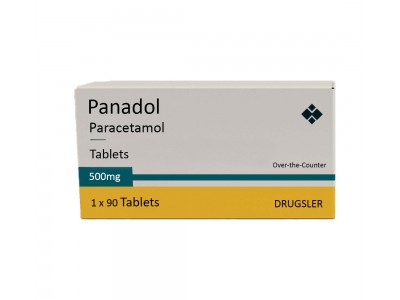Understanding the Use of Paracetamol for Chronic Migraine Treatment
Chronic migraines and other conditions that cause severe head pain are debilitating and significantly impact the quality of life. Many people turn to over-the-counter migraine treatment options, with paracetamol being one of the most commonly used medications. However, questions often arise about whether it is safe to use paracetamol for chronic migraines over an extended period. This article delves into the safety concerns and potential risks associated with the long-term use of paracetamol for treating chronic migraines and other severe head pain conditions.
What is Paracetamol?
Paracetamol, also known as acetaminophen in some regions, is a widely used pain reliever and fever reducer. It is commonly found in many OTC medication for severe head pain and is often the first line of defense against headaches, including migraines. The drug works by blocking the production of certain chemicals in the brain that cause pain and inflammation.
The Appeal of Paracetamol for Chronic Pain Management
For individuals dealing with chronic migraines, the consistent and debilitating nature of their pain often leads them to seek chronic migraine treatment options that are easily accessible and effective. Paracetamol is favored because it is readily available, affordable, and generally well-tolerated by most people. Moreover, it does not have the addictive properties associated with some other painkillers, making it an attractive option for long-term use.
The Risks of Long-Term Paracetamol Use
While paracetamol is effective in managing pain, there are concerns regarding its long-term use, especially when taken regularly for chronic conditions like migraines. One of the primary concerns is the potential for liver damage. The liver is responsible for metabolizing paracetamol, and prolonged use can strain this organ, leading to serious complications. This raises the question, Is paracetamol safe for long-term use?
Liver Toxicity and Paracetamol
The risk of liver toxicity is one of the most significant dangers associated with the long-term use of paracetamol. When taken in high doses or over an extended period, paracetamol can cause irreversible liver damage, which may lead to liver failure. This is especially true for individuals who consume alcohol regularly or have pre-existing liver conditions. Therefore, it is crucial for anyone considering long-term paracetamol use to consult with a healthcare professional to assess their risk factors.
Alternatives to Paracetamol for Chronic Migraine Treatment
Given the risks associated with long-term paracetamol use, it is important to explore other chronic migraine treatment options. Non-steroidal anti-inflammatory drugs (NSAIDs), triptans, and preventive medications such as beta-blockers or antidepressants are often recommended by healthcare providers. These alternatives can be more suitable for long-term management of chronic migraines, as they offer different mechanisms of action and may carry fewer risks than paracetamol.
OTC Painkillers for Chronic Conditions: A Cautionary Note
While over-the-counter medications like paracetamol and NSAIDs can provide relief for severe headaches and chronic migraines, it is essential to use them judiciously. OTC painkillers for chronic conditions should not be relied upon as a sole treatment strategy, especially for prolonged periods. Regular consultation with a healthcare provider is necessary to monitor the effectiveness and safety of the treatment regimen.
Conclusion: Weighing the Risks and Benefits
In summary, while paracetamol can be a useful tool in managing chronic pain management, including migraines, the risks associated with its long-term use cannot be ignored. The potential for liver damage, especially in those with other risk factors, necessitates caution and professional guidance. It is vital for individuals suffering from chronic migraines to explore all available treatment options, including preventive therapies, to minimize the reliance on any single medication. Ultimately, the decision to use paracetamol for chronic migraines should be made in consultation with a healthcare provider who can tailor the treatment plan to the individual’s needs and health status.
The question, Is paracetamol safe for long-term use?, is complex and requires careful consideration of the risks and benefits. By understanding these factors and seeking professional advice, individuals can make informed decisions about their pain management strategies, ensuring both efficacy and safety in the long term.

